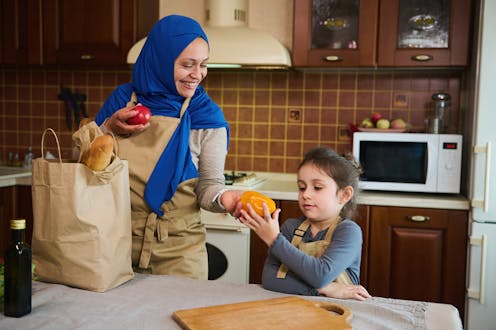
Australia has long been a nation of migrants. Immigration is now being increased to make up for COVID-related labour shortages. The housing crisis means the new arrivals are likely to face major challenges in finding adequate housing and settling successfully.
The challenges will be particularly great for migrants and refugees from non-English-speaking backgrounds. Our recent research focused on the integration challenges faced by the millions of these migrants who have arrived in Australia since 1975. Our findings show the barriers they face, including discrimination, have not changed significantly since then.
In particular, their problems finding suitable housing and jobs have hampered their integration in Australian society.
Such a situation perpetuates systemic injustices that affect marginalised individuals and communities. The 2017 parliamentary report, No One Teaches You to Be an Australian, highlights the impacts of inadequate access to affordable and suitable housing. It can lead to social isolation, economic disadvantage and poor health for migrants.
The housing situation has become even more challenging since the 2017 report. If immigration is being encouraged, why isn’t more being done to help migrants settle in this country?
Read more: What's behind the recent surge in Australia's net migration – and will it last?
Housing supply isn’t the whole solution
Providing more homes is certainly important. However, it isn’t the complete solution.
Migrants from non-English-speaking backgrounds face multiple obstacles to finding suitable and affordable housing. These include language barriers, lack of local housing references, lack of social networks, norms around family size, and unfamiliarity with Australian housing regulations.
A 2022 study of refugees’ housing choices unpacks the complexity of the issue. Its findings point to the need for a broader approach than only providing more homes.
Solutions should target the systemic discrimination against migrants from non-English-speaking backgrounds in Australia. It’s a major problem that adds to the already complex issues of access to affordable housing.
Read more: A white face can be a big help in a discriminatory housing market
Building social networks is a key strategy for overcoming some of the obstacles these migrants face. Our research has found being part of a social network plays a critical role in migrants’ and refugees’ housing choices.
Migrants who have social connections are more likely to be aware of available housing options. They can also get help navigating the complex housing market.
This finding highlights the importance of services that help migrants build social connections and promote community-led initiatives. Housing programs that prioritise diversity and inclusivity are needed.
We have seen some good examples of a holistic approach to housing migrants and refugees in Australia.
The Asylum Seeker Resource Centre in Melbourne provides one such integrated housing service. The centre has created a housing model that matches refugees with available housing and support networks. It’s providing refugees with not only a place to live but also a sense of community and support.
Another example comes from the Hume Community Housing Association. It, too, has developed a holistic program to provide affordable, secure housing for refugees and migrants. The program includes services such as employment and education assistance, language classes and social integration activities.
Integration benefits migrants and the country
The integration of migrants is particularly important for Australia’s future prosperity. Migration underpins the projected increase in population to at least 37.4 million by 2066. Successful integration depends on a comprehensive approach, with a particular focus on housing, given its central role in this process.
The Refugee Council of Australia has recommended several ways to improve access to housing for refugees and asylum seekers. These include:
- increasing social and affordable housing options
- enhancing the private rental housing sector via measures such as rental subsidies, tenant support programs and collaboration with housing agencies
- offering customised support services to aid in the transition to sustainable housing, ensuring individuals have access to affordable, long-term housing options.
Encouraging immigration without providing the resources needed for successful integration perpetuates systemic injustice that worsens the situation of already marginalised individuals and communities in Australia.
Supporting the integration of immigrants, with access to the services they need, is not just a matter of providing more homes or jobs. It’s also about promoting fairness and equity more broadly.
Integration is a two-way street, and overcoming some of these challenges is beyond the efforts of migrants. It’s up to the host society to adopt supportive policies that ensure successful integration.
Francesca Perugia works for Curtin University. She receives funding from Australian Government Research Training Program (RTP) and the Australian Housing and Urban Research Institute (AHURI) postgraduate top-up scholarship to complete the research linked in this article.
Omid Rezaei and Vicki Banham do not work for, consult, own shares in or receive funding from any company or organization that would benefit from this article, and have disclosed no relevant affiliations beyond their academic appointment.
This article was originally published on The Conversation. Read the original article.







